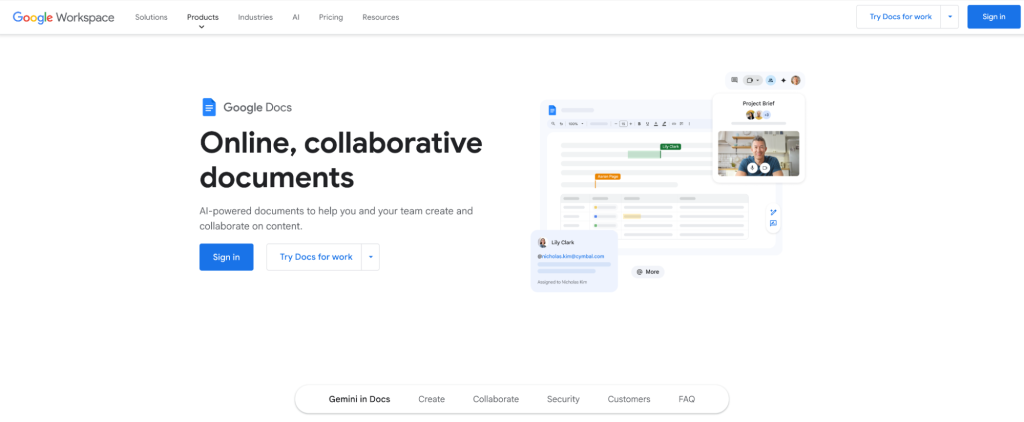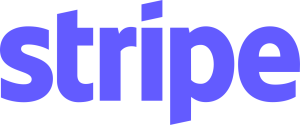Content Operations: Where to Start & How To Achieve Better ROI
You know that feeling when you can’t find the Google Doc with the latest product messaging? Or when three people are working on different versions of the same blog post? Or maybe when your CEO asks why last quarter’s content didn’t drive more leads?
The solution? Take a step back to assess your content operations.
Content operations (ContentOps) is how you create, manage, and deliver content without the mess.
In this guide, you’ll learn how to build content operations that:
- Save time and money
- Improve content quality and consistency
- Drive measurable business results
- Scale with your growing content needs
Plus, we’re including five free downloadable resources – templates, worksheets, and assessment tools – that you can start using right away to improve your content operations.
What Is Content Operations (And Why Should You Care?)
Content operations is the set of people, processes, and technology that powers your content from idea to results. It’s not what content you create, but how you create it.
Think of it this way: Content strategy is deciding what to build. Content marketing is building it. Content operations is the blueprint, tools, and assembly line that make building possible.
Why does this matter? Because without solid operations:
- Teams waste hours hunting for assets and information
- Content quality varies wildly
- Deadlines slip
- Budget gets wasted on duplicate efforts
- Results suffer
According to a study by Kapost (now Upland Software), B2B organizations waste $958 million each year on inefficient content processes.
A 2023 Content Marketing Institute survey found that only 19% of content marketers rate their content operations as sophisticated or mature.
Want to know where you stand? Take this quick self-assessment:
- Can anyone on your team find any content asset in under 2 minutes?
- Do you have documented processes for each content type?
- Can you quickly see all content in production and its status?
- Do you reuse content components rather than starting from scratch?
- Can you measure the results of your content efforts?
If you answered “no” to any of these, you have room to improve your content operations.
The Three Components of Your Content Operation
All components of a well-structured and efficient content operation fall into:
- People
- Process
- Technology
People
People are the foundation of every effective content operation. Without the right team structure, roles, and alignment, even the best tools and processes won’t deliver results.
Strong content operations start with ownership. Someone needs to be clearly responsible for making sure things run smoothly — not just at the strategic level, but in the day-to-day work. When no one owns content operations, deadlines slip, handoffs break, and nobody’s sure who’s doing what.
Defined roles are just as critical. Everyone involved in content production should know what they’re responsible for, how their work connects to others, and when they need to step in. Clear boundaries reduce confusion and keep things moving.
Avoid over-engineering the process. Keep approval paths lean. Too many checkpoints slow everything down and frustrate the team. One or two clear reviewers are usually enough to maintain quality without creating bottlenecks.
Most teams will also need support from outside contributors. Freelancers and specialists can help scale output, cover skill gaps, and allow your internal team to focus on higher-leverage work — as long as expectations and workflows are clearly defined.
Good documentation is what ties it all together. A central place for templates, workflows, and guidelines makes onboarding faster and keeps everyone aligned — but only if the documentation is actually used and regularly updated. If it’s outdated or scattered across tools, it won’t help.
And none of this works without buy-in. Content ops only work when the whole team sees it as their responsibility — not just something for the writers to figure out.
Ask yourself:
- Is there a single point of ownership?
- Do people know exactly what they’re responsible for?
- Is your documentation useful — or just theoretical?
That’s what sets high-functioning teams apart. Not tools. Not strategy decks. People who are aligned and empowered to execute.
Process
Clear processes turn ideas into published content. Without them, things slow down quickly.
The goal isn’t complexity. It’s clarity. Everyone involved in content production should know exactly what happens, when, and by whom — from ideation through to publication and distribution.
That starts with well-defined workflows. Each content type — whether it’s a blog post, landing page, or video — should follow a consistent process. This includes:
- How topics are proposed
- How briefs are created
- Who’s responsible for what stage
- How reviews happen
- What “ready to publish” actually means
Templates are essential. Content briefs, production checklists, editorial calendars, and even review comments should follow repeatable formats. These don’t just save time — they reduce errors and make collaboration easier across teams.
Good process also means managing approvals with discipline.
The best teams review quickly, with just enough oversight to maintain quality — not turn every draft into a group project.
Your documentation should live where the work happens — not buried in a Google Drive folder no one opens. That includes your style guide, tone of voice guidelines, SEO checklists, naming conventions, version control process, and publishing standards. Make them easy to reference, keep them updated, and encourage your team to use them.
Technology supports the process — but shouldn’t define it. Tools should enable the workflows you’ve designed, not force you to work around limitations. And once the process is working? Automate what you can. Assigning briefs, notifying reviewers, tracking revisions — all of it can be streamlined with the right setup.
Strong processes don’t just help the team move faster. They reduce risk, improve consistency, and create a repeatable system that scales with your content goals.
Technology
Ignore the noise — you don’t need a sprawling stack of tools to run a solid content operation.
What you do need is a reliable system for managing work and a simple, collaborative place to create and review content. For most teams, that means two things: a project management tool like Asana, and Google Docs for writing and feedback.
That’s more than enough to run a well-organized content operation.

Asana is the project management tool we rely on to run everything that isn’t product or engineering — from blog posts and video production to product documentation and internal operations. It’s flexible, easy to use, and actually holds up when you’ve got lots of moving parts and multiple teams involved.
We’ve tried the others. For content operations with real complexity — not just assigning a blog post here and there — Asana is the only platform that gets the job done. That’s why we use it for our enterprise clients and in our own day-to-day work.
(For product and engineering, we use Linear. It’s better suited for that type of work. But for content, marketing, and operations — Asana wins.)
Pair it with Google Docs for writing and collaboration – still the fastest and most reliable way to get feedback, share work, and keep things moving.
You can always add more tools — for SEO, analytics, or design — but only if they actually solve a problem. More tools won’t fix a broken process.
And complexity is what kills momentum.

What matters isn’t having the most tools. It’s having the right setup that helps your team move faster, stay on the same page, and do better work.
Soon: Workover 👀

We’re currently building Workover for our own internal use as a team that’s helped countless industry-leading companies achieve success with content. Once we feel it’s at a stage where we can invite others in – we will!
In addition to these three core tools, any solid content operations stack should cover the following:
- Grammarly for editing (doesn’t replace a good human with attention to detail, but definitely helps).
- Ahrefs or Semrush (for keyword research, rank tracking, and more).
- Publer for social media
The Ideal Content Team Structure
There’s no single way to structure a content team — it depends on your company’s stage, priorities, and available resources. But regardless of size, the goal is the same: build a team that can consistently produce high-quality content without wasting time or energy.
Here’s how that might look at three different stages of growth.
The Ambitious Startup
Even small teams need to run content like a proper operation. That means documented workflows, a single source of truth, and basic analytics — from day one.
The person leading content can wear multiple hats, but ownership must be clear. Content creation, review, and publishing shouldn’t happen ad hoc. Define a simple workflow and stick to it.
Use generalist tools, but use them well. Google Docs is still one of the fastest ways to write and collaborate. Asana or Trello should track every content asset from idea to publication. Set up a basic analytics dashboard using Google Analytics or Looker Studio — if you’re not measuring performance, you’re guessing.
Templates, briefs, and a central content calendar aren’t advanced features. They’re table stakes. Start with the essentials, and tighten execution before scaling production.
The Scale-Up Maturing Its Content Function
This stage isn’t about introducing content analytics — it’s about going deeper and making decisions based on what the data actually shows.
You should already have performance tracking in place. Now is the time to tie that data to production:
- Which types of content are delivering results
- Which workflows are efficient
- Which bottlenecks are slowing you down
Hiring a content operations manager helps build more consistency and predictability. You should also have dedicated contributors — not generalists juggling 10 responsibilities. Writers write. Designers design. A clear production process supports each role.
Governance matters more here. You’re producing more content, at higher velocity, across more channels. Style guides, brand voice documentation, approval rules, and version control aren’t optional.
This is also where tool choice starts to matter more. Your stack should reflect your needs — not what’s popular. Don’t bloat it. Every tool should have a clear job and integrate with your workflows.
The Enterprise Relying on Content to Sustain Growth
At this level, content operations stop being reactive — they drive how content gets done across the company. The organization doesn’t just produce content. It produces content at scale, with quality, and with measurable business impact.
That means enterprise-level systems. A DAM and CMS that support global collaboration. Structured content that’s reused, localized, and personalized. Role-based permissions. Automated workflows. Robust analytics tied to business outcomes.
AI tools may support things such as content repurposing, tagging, or performance prediction — but they should support a well-defined human process — not replace it.
Each team member should have a defined role in the content supply chain. The content team supports product, marketing, and sales — and helps everyone stay aligned.
And above all: the team is accountable. Not just for publishing, but for outcomes. Content operations at this stage should drive performance, efficiency, and scale — and prove it.
Measuring Content Operations Success
You can’t improve what you don’t measure — but tracking metrics for the sake of it doesn’t help either. What matters is using data to make better decisions about your content, your team, and your systems.
Start with two questions:
- Are we producing content efficiently?
- Is that content delivering results?
To answer those, you need both efficiency and effectiveness metrics.
Efficiency metrics tell you how well your process is working. If content takes weeks to ship, or half your team’s time is spent chasing approvals, your operation isn’t functioning — no matter how good the output is. Look at things like time to publish, hours spent per asset, and content reuse rates. Low reuse often points to problems with structure, storage, or discoverability.
Effectiveness metrics show whether the content itself is performing. That includes views, engagement, conversions, and usage by internal teams. But it also includes subjective measures — like brand consistency, editorial quality, and how confident your team feels working within the system.
To move beyond anecdotal reporting, tie both sides together in a basic ROI calculation:
ROI = (Value of Content – Cost of Content) / Cost of Content
Where:
- Value = Revenue directly attributed to content + Cost savings from operational improvements
- Cost = Production + Technology + Team
Example:
A team invests $10,000 in improving their content operations. That unlocks $30,000 in new revenue and saves $5,000 in time and tool costs.
ROI = ($35,000 – $10,000) / $10,000 = 2.5 or 250%
That’s $2.50 returned for every $1 invested.
ContentOps Maturity Model
Where does your organization stand on the ContentOps maturity curve?
Level 1: Ad Hoc
- No defined content processes
- Tools chosen by individual preference
- No centralized content storage
- Limited measurement
- Content created reactively
Level 2: Emerging
- Basic workflows documented
- Core tools selected
- Some templates created
- Basic asset management
- Simple performance tracking
Level 3: Managed
- Documented processes for all content types
- Integrated toolset
- Centralized asset management
- Regular content performance reviews
- Content planning tied to business goals
Level 4: Optimized
- Automated workflows
- Full tool integration
- Advanced asset management with AI assistance
- Comprehensive analytics and optimization
- Predictive content planning
Level 5: Strategic
- Content operations as a competitive advantage
- Fully integrated content supply chain
- AI-powered content operations
- Predictive content performance
- Continuous optimization system
Most organizations sit between Level 2 and Level 3. The good news? Even moving up half a level can yield significant results.
The Future of Content Operations
The next phase of content operations won’t be defined by flashy tools or vague trends. It’ll be shaped by what high-performing teams are already doing — and what slower teams will need to catch up on.
Here’s what’s changing, and what it means for your team.
AI Isn’t Coming — It’s Already Here
AI isn’t a hypothetical. It’s already improving briefs, helping teams tag assets, repurpose content, and forecast performance. What matters now is using it deliberately. Use automation for what it’s good at — tagging, summaries, internal links. Don’t use it to skip the thinking.
AI will be most effective when paired with structured content, good governance, and clear workflows. Without that foundation, it just creates more mess.
Structured Content Wins
Reusable content components — intros, product blurbs, quotes, CTAs — are becoming the norm. Teams that treat content as modular assets can produce faster, localize more easily, and personalize without rewriting everything.
This approach also enables consistency at scale. Whether you’re updating a message or rolling out a new brand guideline, structured content makes it possible.
ContentOps Becomes Cross-Functional By Default
Content operations only work when shared across teams. The teams that scale well are already treating operations as a shared system across marketing, product, sales, and customer success. That means shared tools, shared processes, and a clear single source of truth.
This shift also changes how content roles are staffed. We’re already seeing more content ops managers with experience in systems, automation, and analytics — not just writing and editing.
Measurement Becomes Non-Negotiable
Leadership doesn’t just want more content. They want content that moves numbers. As operations mature, ROI isn’t a bonus — it’s a baseline requirement. Every investment in content infrastructure needs to show a return: in time saved, quality improved, or results delivered.
Getting Started: Your Content Operations Action Plan
Improving content operations doesn’t require a full teardown. It’s about starting where you are, fixing what’s broken, and building momentum with small, high-impact changes.
Begin with a clear assessment. Map your current workflows. Take stock of the tools in use — and the ones collecting dust. Talk to your team. Identify where things slow down, where responsibilities are unclear, or where quality drops.
From there, look for immediate wins. Eliminate duplicate tools. Fix obvious handoff issues. Standardize how briefs are written. Create templates for recurring content types. If you can solve something in a week that saves hours every month, do it.
Once the basics are under control, define a roadmap. Decide what matters most and what order to tackle it in. Assign clear ownership. Set timelines that are realistic — but don’t drag. And treat this as a change management effort, not just a productivity project. People need to understand why the change matters and how it helps them.
Implement gradually. Start with high-leverage fixes. Measure what changes. Share wins. Gather feedback. Iterate. As the system stabilizes, expand it: cover more content types, integrate additional tools, and automate wherever possible.
Two things will help accelerate your progress: automation and expert input. Automate repetitive tasks to reduce human error and free up time. Outsource content creation to specialists where it makes sense — especially if you don’t have subject matter experts in-house. We’ve done this for dozens of clients, and it consistently increases speed without sacrificing quality.
And don’t forget the most important piece: prioritization.
Content teams are constantly asked to do more. But doing more doesn’t prove value — doing the right work does. Align your content efforts with clear business goals. Use OKRs to set focus. When ad-hoc requests come in, evaluate them against those goals. If it’s off-track, say no — or help leadership understand what additional resources would be needed to say yes.
A well-run content operation isn’t just more efficient. It helps you do more with less and connect content to real outcomes.
Start small. Build confidence. Then expand at a pace that makes sense.
After Action Report – Moving From Content Chaos to Content Success
Content operations isn’t a trend — it’s how good teams manage their content work.
The most successful content teams have moved beyond the “produce more content” mindset to focus on creating the right content, in the right way, for the right results.
As content demands continue to grow, the teams that build clear, repeatable systems will stay ahead. They’ll create useful content faster, with less waste and clearer results.
Start with what you have. Make small improvements. Build from there.
The best time to improve your content operations was a year ago. The second best time is now.
Need help with your content operations?
At ScaleMath, we operate & advise companies at every stage of growth. Specific to content operations, we help marketing teams build efficient, effective content operations that deliver measurable business results.
Our team of content operations experts can help you:
- Develop customized frameworks and processes
- Select and implement the right technology
- Train your team on content operations best practices
- Measure and optimize your content performance
Whether you’re starting from scratch or looking to level up your existing content operations – we can help and we’re always here to help.
Imagine your dream growth team. Now click here to meet them.
Note: Whether you’re looking for strategy, an agency team, or to hire in-house talent – ScaleMath is here to accelerate your growth.
Frequently Asked Questions
What’s the difference between content strategy and content operations?
Content strategy defines what content you’ll create and why. It focuses on audience needs, business goals, messaging, and content types. Content operations, on the other hand, is about how you’ll create, manage, and deliver that content. It’s how your team actually gets content created, reviewed, and published — without everything falling apart.
Do I need a dedicated content operations manager?
It depends on the size and complexity of your content needs. Small teams can often assign content operations responsibilities to an existing team member. As content volume and complexity grow, having a dedicated content operations manager becomes more valuable. This person can focus on process optimization, tool selection, and cross-functional coordination.
How do I convince leadership to invest in content operations?
Focus on the business impact. Track metrics such as time to publish, resource hours per content piece, and content usage rate. Calculate the cost of inefficient processes (e.g., “Our team spends 10 hours per week searching for assets, costing us $X annually”). Connect improved operations to business outcomes like increased content output, higher quality, faster time-to-market, and improved content performance.
Which content operations tools should I invest in first?
Start with the basics: a project management tool to track content workflows, a shared storage solution for assets, and a content calendar. The specific tools depend on your team size and needs, but prioritize tools that solve your biggest pain points. As you grow, add specialized tools for digital asset management, content performance, and workflow automation.
How do I get my team to follow content processes?
Change management is key. Involve your team in process development so they feel ownership. Document processes clearly and make them easily accessible. Provide training and support. Start with a few critical processes rather than trying to change everything at once. Show early wins by tracking and sharing improvements. And make sure leaders model and reinforce the new processes.
Can AI replace human roles in content operations?
AI can automate certain tasks such as content research, metadata tagging, and performance analysis. However, it can’t replace human judgment, creativity, brand understanding, and strategic thinking. The most effective approach is using AI to handle routine tasks while humans focus on high-value activities like strategy, creativity, and relationship building. Think of AI as augmenting your team, not replacing it.
How long does it take to improve content operations?
You can achieve quick wins within weeks by addressing obvious bottlenecks and implementing basic templates. Building a comprehensive content operations framework typically takes 3-6 months, depending on your organization’s size and complexity. Reaching higher levels of content operations maturity is an ongoing journey that continues to evolve as your content needs change and new technologies emerge.
What common mistakes should I avoid when building content operations?
Common pitfalls include focusing too much on tools without addressing process issues, creating overly complex processes that teams won’t follow, failing to get buy-in from stakeholders, not defining clear roles and responsibilities, and neglecting to measure the impact of operational improvements. Also, avoid trying to change everything at once – start with the highest-impact areas and build from there.
How do I measure content operations success?
Track both efficiency metrics (time to publish, resource hours per piece, approval cycle time) and effectiveness metrics (content performance, quality scores, ROI). Compare these metrics before and after implementing operational improvements. Also, gather qualitative feedback from your team about process improvements. Success looks like faster content production, higher quality, less waste, better team collaboration, and stronger content performance.
How does content operations fit into the larger marketing organization?
Content operations should align with and support your overall marketing operations. It typically integrates with brand management, demand generation, product marketing, social media, and digital marketing teams. In some organizations, content operations is part of a centralized marketing operations function. In others, it’s a specialized function within the content or marketing team. The key is ensuring clear connections between content operations and other marketing functions.







